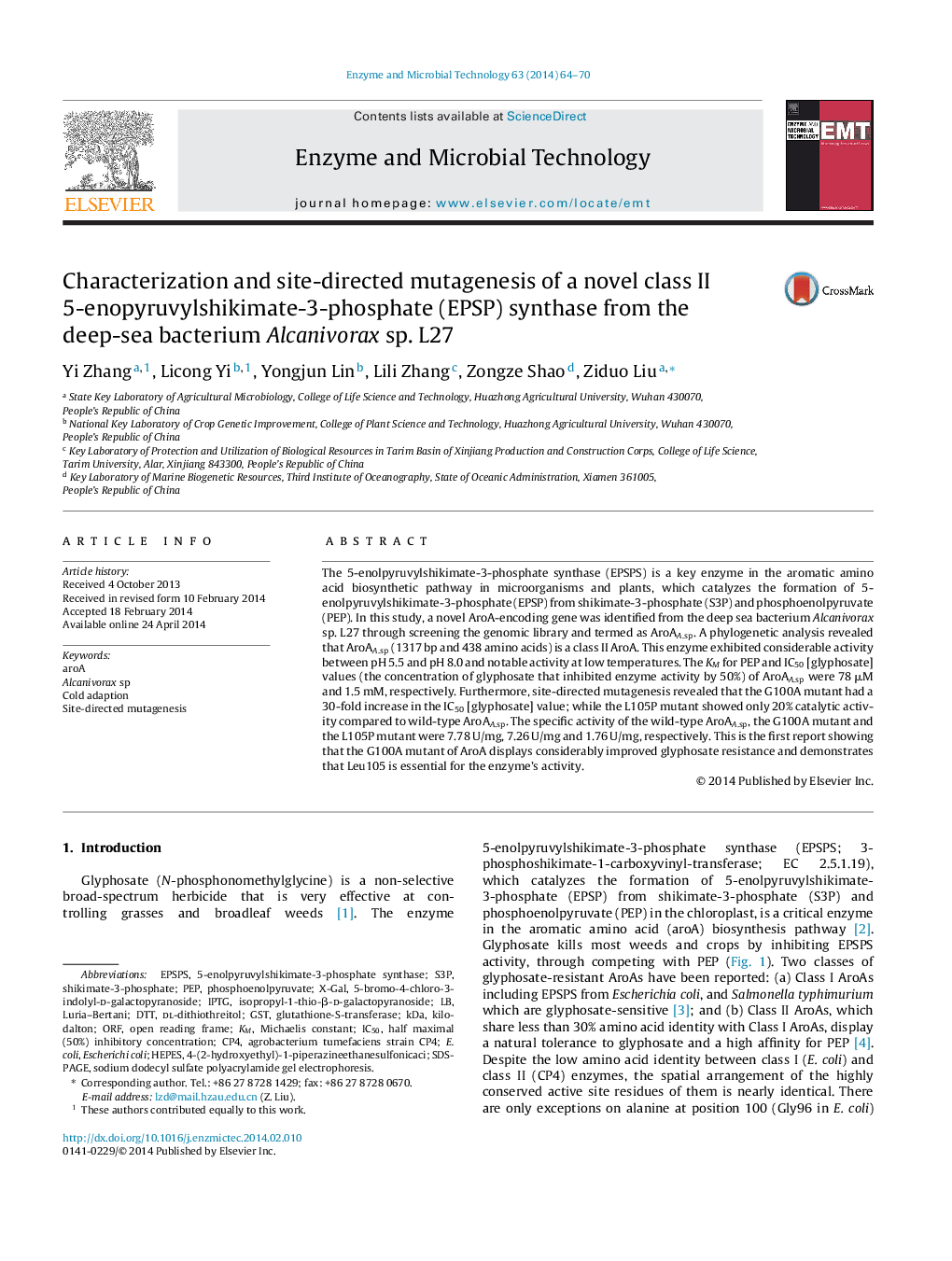| Article ID | Journal | Published Year | Pages | File Type |
|---|---|---|---|---|
| 17170 | Enzyme and Microbial Technology | 2014 | 7 Pages |
•A novel aroA gene was identified from deep-sea bacteria, Alcanivorax sp. L27.•AroAA.sp exhibited activity between pH 5.5 and pH 8.0 and low temperatures.•The KM for PEP and IC50 [glyphosate] of AroAA.sp were investigated.•Site-directed mutagenesis was performed to increase the activity of AroAA.sp.•The specific activities of the wild-type and mutant AroAA.sp were determined.
The 5-enolpyruvylshikimate-3-phosphate synthase (EPSPS) is a key enzyme in the aromatic amino acid biosynthetic pathway in microorganisms and plants, which catalyzes the formation of 5-enolpyruvylshikimate-3-phosphate (EPSP) from shikimate-3-phosphate (S3P) and phosphoenolpyruvate (PEP). In this study, a novel AroA-encoding gene was identified from the deep sea bacterium Alcanivorax sp. L27 through screening the genomic library and termed as AroAA.sp. A phylogenetic analysis revealed that AroAA.sp (1317 bp and 438 amino acids) is a class II AroA. This enzyme exhibited considerable activity between pH 5.5 and pH 8.0 and notable activity at low temperatures. The KM for PEP and IC50 [glyphosate] values (the concentration of glyphosate that inhibited enzyme activity by 50%) of AroAA.sp were 78 μM and 1.5 mM, respectively. Furthermore, site-directed mutagenesis revealed that the G100A mutant had a 30-fold increase in the IC50 [glyphosate] value; while the L105P mutant showed only 20% catalytic activity compared to wild-type AroAA.sp. The specific activity of the wild-type AroAA.sp, the G100A mutant and the L105P mutant were 7.78 U/mg, 7.26 U/mg and 1.76 U/mg, respectively. This is the first report showing that the G100A mutant of AroA displays considerably improved glyphosate resistance and demonstrates that Leu105 is essential for the enzyme's activity.
